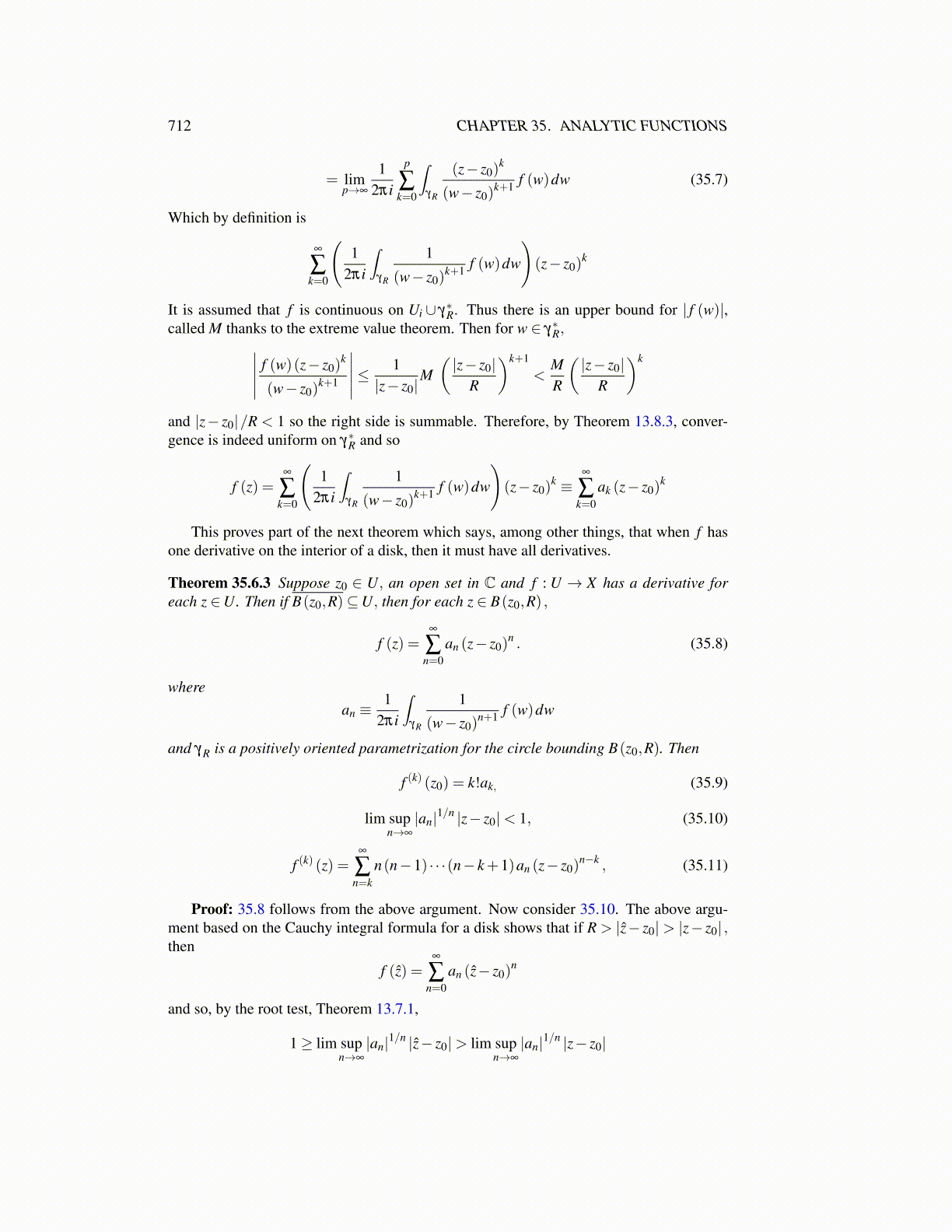
712 CHAPTER 35. ANALYTIC FUNCTIONS
= limp→∞
12πi
p
∑k=0
∫γR
(z− z0)k
(w− z0)k+1 f (w)dw (35.7)
Which by definition is
∞
∑k=0
(1
2πi
∫γR
1
(w− z0)k+1 f (w)dw
)(z− z0)
k
It is assumed that f is continuous on Ui ∪ γ∗R. Thus there is an upper bound for | f (w)|,called M thanks to the extreme value theorem. Then for w ∈ γ∗R,∣∣∣∣∣ f (w)(z− z0)
k
(w− z0)k+1
∣∣∣∣∣≤ 1|z− z0|
M(|z− z0|
R
)k+1
<MR
(|z− z0|
R
)k
and |z− z0|/R < 1 so the right side is summable. Therefore, by Theorem 13.8.3, conver-gence is indeed uniform on γ∗R and so
f (z) =∞
∑k=0
(1
2πi
∫γR
1
(w− z0)k+1 f (w)dw
)(z− z0)
k ≡∞
∑k=0
ak (z− z0)k
This proves part of the next theorem which says, among other things, that when f hasone derivative on the interior of a disk, then it must have all derivatives.
Theorem 35.6.3 Suppose z0 ∈ U, an open set in C and f : U → X has a derivative foreach z ∈U. Then if B(z0,R)⊆U, then for each z ∈ B(z0,R) ,
f (z) =∞
∑n=0
an (z− z0)n . (35.8)
wherean ≡
12πi
∫γR
1
(w− z0)n+1 f (w)dw
and γR is a positively oriented parametrization for the circle bounding B(z0,R). Then
f (k) (z0) = k!ak, (35.9)
lim supn→∞
|an|1/n |z− z0|< 1, (35.10)
f (k) (z) =∞
∑n=k
n(n−1) · · ·(n− k+1)an (z− z0)n−k , (35.11)
Proof: 35.8 follows from the above argument. Now consider 35.10. The above argu-ment based on the Cauchy integral formula for a disk shows that if R > |ẑ− z0|> |z− z0| ,then
f (ẑ) =∞
∑n=0
an (ẑ− z0)n
and so, by the root test, Theorem 13.7.1,
1≥ lim supn→∞
|an|1/n |ẑ− z0|> lim supn→∞
|an|1/n |z− z0|